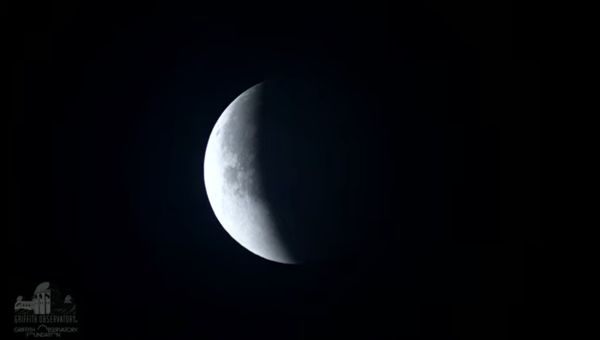When you buy through data link on our situation , we may realize an affiliate commission . Here ’s how it work .
Billions of years ago , something slammed into thedark side of the moonand carve out a very , very big yap . load 1,550 miles ( 2,500 kilometers ) wide and 8 miles ( 13 klick ) deep , theSouth Pole - Aitken washbowl , as the terrific hole is cognize to Earthlings , is the oldest and deep volcanic crater on the lunar month , and one of the largest craters in the entiresolar system .
For decade , investigator have suspected that the elephantine basin was created by a head - on hit with a very large , very fast meteor . Such an encroachment would have rend the moon ’s cheekiness apart and dissipate chunks of lunar mantlepiece across the volcanic crater ’s surface , providing a rare glance at what the moon is really made of . ( Spoiler : It ’s not cheese . ) That theory gained some credence earlier this year , whenChina ’s Yutu-2 rover , which settled into the bottom of the volcanic crater aboardthe Chang’e 4 landerin January , discovered traces of mineral that seemed to originate from the moonshine ’s mantle .

The South Pole-Aitken basin (represented by the shades of blue at the center) stretches 1,550 miles (2,500 kilometers) across and is one of the solar system’s largest craters. The dashed circle indicates the spot where researchers found a weird material beneath the basin that contains metal.
Now , however , a study publish Aug. 19 in the journalGeophysical Research Lettersthrows those results — and the crater ’s parentage story — into question . After dissect the mineral in six plots of soil at the bottom of the South Pole - Aitken basin , a squad of researcher argues that the crater ’s composition is all crust and no mantle , suggesting that whatever impact opened the crater one thousand million of years ago did not hit hard enough to spray the synodic month ’s entrails onto the surface .
Related:5 Strange , Cool Things We ’ve Recently Learned About the moonlight
" We are not seeing the mantle materials at the landing site as expect , " study Centennial State - source Hao Zhang , a world-wide scientist at the China University of Geosciences , read in a argument . These findings all but rule out a verbatim hit with a in high spirits - speed shooting star and raise the question : What , if not a nous - on meteor work stoppage , create the declamatory volcanic crater on the moonlight ?

Yutu 2 found a strangely colored substance in a crater on the far side of the moon.
Lighting up the dark side
In their new study , the researchers used a proficiency call off reflectionspectroscopyto identify specific minerals in the lunar dirt based on how single grain reflect visible and nigh - infrared light .
Using equipment aboard the Yutu 2 rover , the team conduct reflectivity tests on six patches of soil in the first two days stick to Chang’e 4 ’s landing , venturing about 175 feet ( 54 meter ) forth from the lander . With the help of a database that discover lunar minerals ground on a variety of factors — include size , reflectance and degradation due tosolar wind — the squad estimated the mineral concentration in each of the plots .
A crystalline rock calledplagioclasewas by far the most abundant mineral in each sample , accounting for 56 % to 72 % of the volcanic crater ’s composition , the investigator write . Formed as primeval sea of lava cool , oligoclase is extremely vernacular inthe crusts of Earthand the lunation likewise , but it ’s less abundant in their mantles . Though the team detected other minerals in the impudence that are more vulgar in the synodic month ’s mantle , such as olivine , these rocks made up too small a fraction of the dirt samples to suggest that part of the mantlepiece had break through the crust .

This mineral make-up complicates the theory that a giant , gamey - velocity meteor make the South Pole‐Aitken basin billions of twelvemonth ago , as such an shock almost certainly would have scattered chunks of curtain over the lunar surface .
So , what , then , created the crater ? The researcher did not speculate in the new bailiwick . However , anterior research has suggested that a renegade space rock is still the culprit , but the bang may not have been so direct . A work put out in 2012 in the journalScienceargued that a slightly slower - displace meteor could have struck the back of the moon at an angle of about 30 degrees and resulted in an fittingly large volcanic crater that never disturbed the Sun Myung Moon ’s mantle . However , those researchers had only computer simulation to go on .
If nothing else , the newfangled research suggests that there ’s a peck more exploring to do in the South Pole‐Aitken basin before an answer becomes apparent . See you on the dark side of the moon .

Originally publish onLive Science .
















